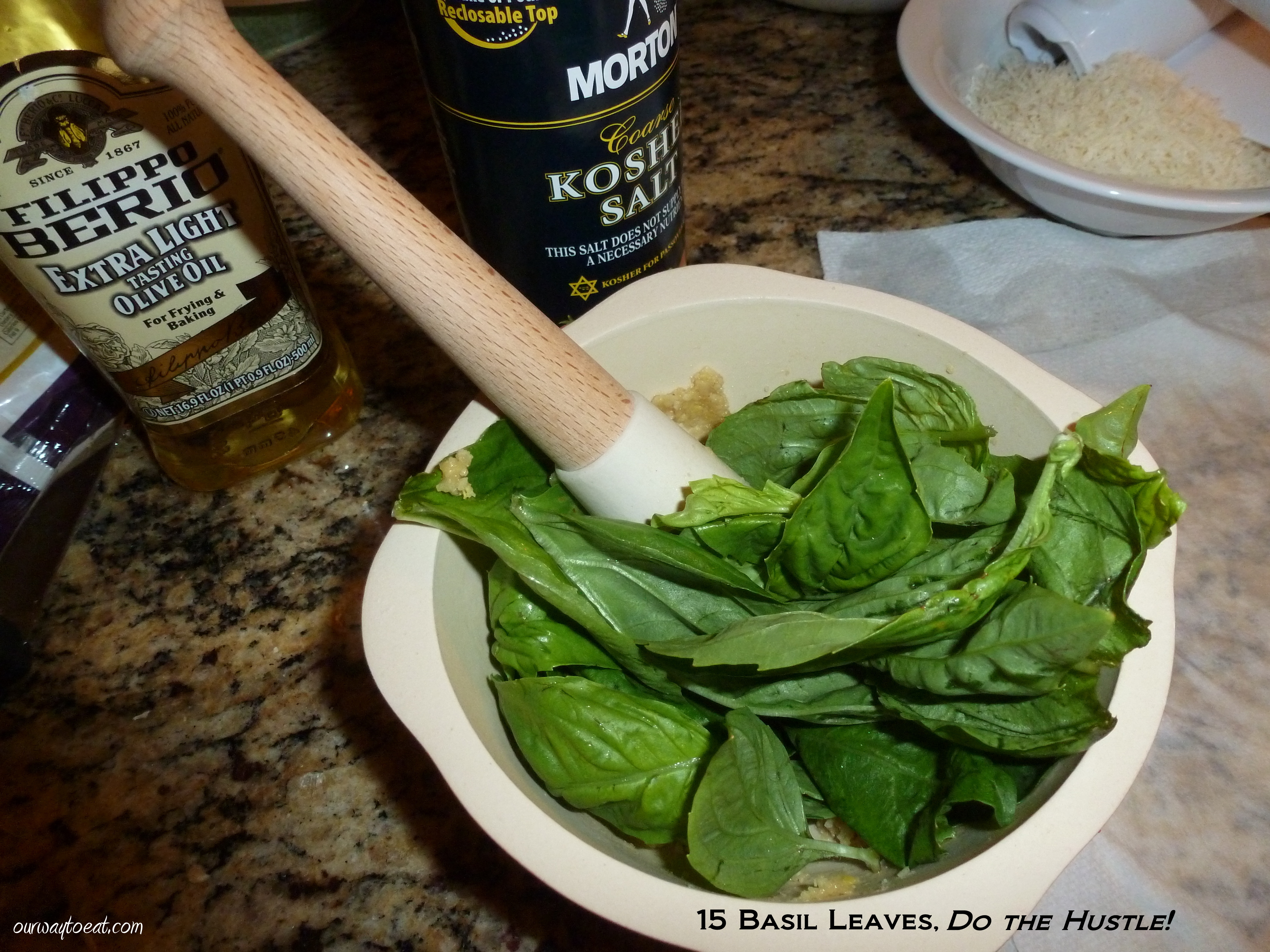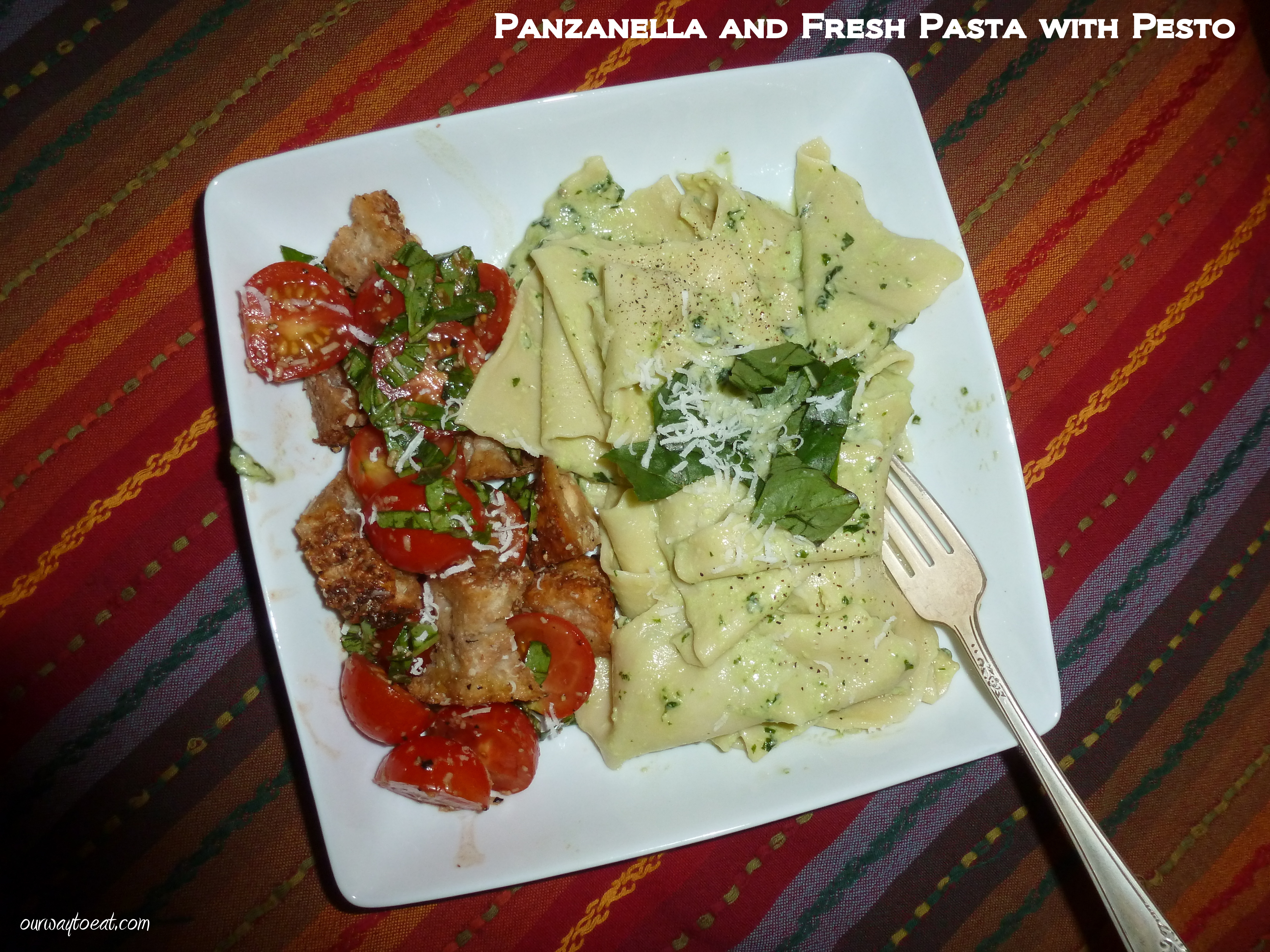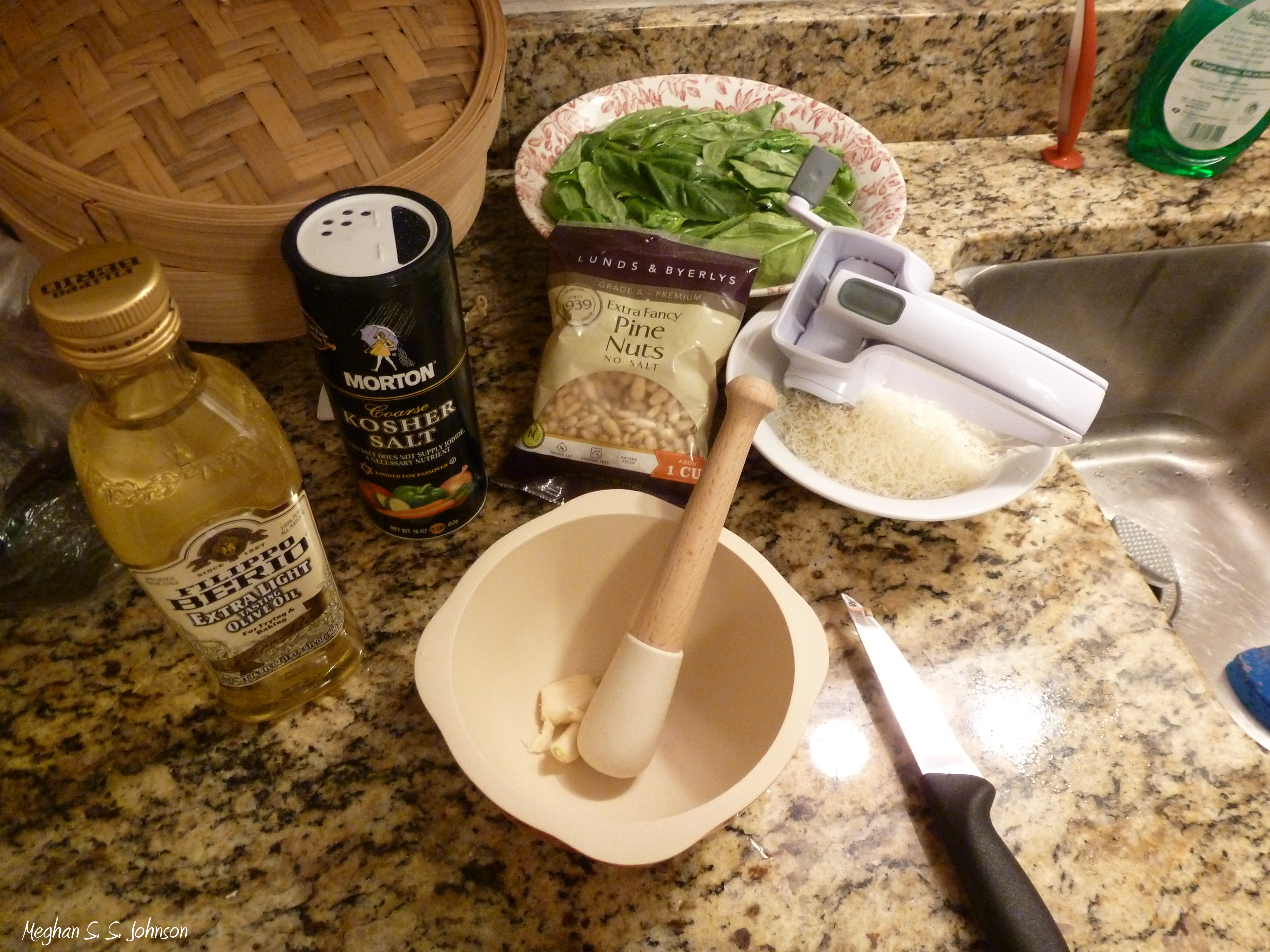If it hasn’t already become extremely obvious, pasta is one of my all-time favorite foods. There are so many variations, from basic buttered noodles to whatever-you-have-in-the-fridge, to traditional recipes: stroganoff, Bolognese, or pasta all’Amatriciana. I’m usually a “concept cook” who has something in mind [e.g. pasta with veggies] and the actual ingredients I use depend on what I’m in the mood for or what needs to be used up. I haven’t been one to follow many recipes. I enjoy the freedom of my slapdash approach to cookery, but I have tasted enough really good food in my years to know that recipes, carefully chosen ingredients, timeless techniques and even a little precision are equally as necessary in the kitchen as passion and creativity. It also pays to take a few tips from the experts. I have long loved food blogs, food magazines, food television, cookbooks and hanging out in other people’s kitchens. Reading about cooking, talking about it and observing other cooks in action are my source of inspiration. These are as much my hobbies as cooking and writing about food. I became aware of the noticeable difference that good technique and ingredients yield in restaurant meals, but the breakthrough did not occur at home until I learned about the perfect pesto.
 It was just another Wednesday night. I found myself watching short programs on the Chow network on our Roku on cooking and food. There was an episode on soup dumplings,* and on the perfect beer,** and then a segment on the perfect pesto aired and changed my approach to pesto forever.
It was just another Wednesday night. I found myself watching short programs on the Chow network on our Roku on cooking and food. There was an episode on soup dumplings,* and on the perfect beer,** and then a segment on the perfect pesto aired and changed my approach to pesto forever.
 Previously, I have only had a modest appreciation of pesto. The first pesto pasta I ate was a lunch back in my teenage years at the now-shuttered Grandma’s Restaurant in Fargo, North Dakota. It was so heavily garlic-y that I was afraid of both pesto and garlic for almost a decade. I still shudder to think about how much raw garlic I consumed before realizing it would be with me for days. More recently, I have tasted a pretty good silk handkerchief in a mild, dark green pesto at Bar La Grassa. Having grown basil in our garden, I’ve also made basil and parsley pestos at home that have been fine on toasted sandwiches and roasted vegetables. None of these looked anything like the marvelous green pesto I saw that evening on the Chow network.
Previously, I have only had a modest appreciation of pesto. The first pesto pasta I ate was a lunch back in my teenage years at the now-shuttered Grandma’s Restaurant in Fargo, North Dakota. It was so heavily garlic-y that I was afraid of both pesto and garlic for almost a decade. I still shudder to think about how much raw garlic I consumed before realizing it would be with me for days. More recently, I have tasted a pretty good silk handkerchief in a mild, dark green pesto at Bar La Grassa. Having grown basil in our garden, I’ve also made basil and parsley pestos at home that have been fine on toasted sandwiches and roasted vegetables. None of these looked anything like the marvelous green pesto I saw that evening on the Chow network.
According to the food writer, Marcia Gagliardi who appeared in the segment, perfect pesto can be had in San Francisco at a restaurant called Farina, on a pasta dish called mandilli al pesto. I do believe Marcia is right. When you read about Farina, you get a sense that they are better at what they do than everyone else. The chefs of Farina make known their belief that only Italians can cook the true foods of their region. I am not going to dispute that or attempt to prove them wrong. But I am going to try to learn as much as I can from them about making pesto. In the segment I watched, Chef Paolo Laboa of Farina explains the process of making pesto while shifting naturally from English and Italian, translating himself, and pausing to emphasize the importance of each detail of his approach. What becomes immediately clear even through the television is the fact that his pesto is different. It is bright green and creamy and is almost a perfectly emulsified, glistening paste. When Chef Paolo adds the pesto to the pasta, it melts, enveloping the thin sheets in a perfect, translucent, green coating. I’m guessing it is a meal that dreams are made of. Just looking at it makes you want to be in the Mission District for supper tonight. Or at our house…
 Back to a winter day in Minnesota… I may never duplicate Chef Laboa’s pesto, but in listening to him, I learned a few things about how to make a better pesto. First, for a pesto worthy of freshly rolled pasta, you have to ditch the food processor and use a mortar and pestle. Fortunately for me, I just received one for Christmas from Bjorn. The one he selected for me is a nice small size that I can comfortably manage to hold. It is made of non-porous porcelain and a smooth wooden handle and a red exterior that I am happy to store on the open shelves in our kitchen.
Back to a winter day in Minnesota… I may never duplicate Chef Laboa’s pesto, but in listening to him, I learned a few things about how to make a better pesto. First, for a pesto worthy of freshly rolled pasta, you have to ditch the food processor and use a mortar and pestle. Fortunately for me, I just received one for Christmas from Bjorn. The one he selected for me is a nice small size that I can comfortably manage to hold. It is made of non-porous porcelain and a smooth wooden handle and a red exterior that I am happy to store on the open shelves in our kitchen.
I learned from Chef Paolo that the origin of ingredients matters a lot. Basil pesto universally contains basil, pine nuts, garlic, olive oil, parmesan cheese and salt. Sure, you can make pesto out of these ingredients produced anywhere, but to begin to approximate Paolo Laboa’s pesto, you need basil that is similar to that grown in Genoa, Olive Oil from Liguria, Pine Nuts from Pisa, and carefully-selected Parmesan. And you need time. Lots of time. After watching the segment and trying to make it myself a few times I realized the making of Paolo’s pesto takes longer than it appears to take on TV.
I did the best I could gathering ingredients. It is winter, and the basil I found at the store wasn’t the best. I do believe that the Genovese basil from our garden will be an improvement on the basil available at the supermarket in a clamshell package in January. I didn’t spring for $18 Italian Pine Nuts but got some from Spain instead. I tried a few of Chef Laboa’s tips. Since Ligurian olive oil is not available to me I used light olive oil instead of extra virgin which is too strong and kills the taste of the basil. I soaked the basil leaves in water because, I learned if you don’t soak the basil there is too much chlorophyll in the leaves. I crushed the pine nuts with garlic and coarse salt and added 15 basil leaves. I put my heart into the process of grinding all of the ingredients together and then mixing in the oil. When the pesto was ready, I added a little pasta water to the pesto to melt the cheese before tossing hand-rolled handkerchiefs of pasta in the pesto. The end result of my effort did not yield the solid bright-green cream produced by Chef Laboa. Not even close. Even so, we thought the result was delicious and immeasurably better than the oily, basil-heavy, oxidized, chunky sludge that I’ve made in the food processor. If pesto is worth making, it is worth making well. Will I spend 45 minutes with the mortar and pestle to make pesto every week? Certainly not. It is a time-consuming process and a rich dish you can’t eat every week. Come summer though, when the basil is bursting forth I will make pesto again. I might not achieve “perfect” pesto, but delicious will be good enough.
*The segment about soup dumplings made me want soup dumplings which are little pouches made of dough that are stuffed with meat and fatty broth that liquefy upon cooking. Are there vegetarian soup dumplings out there? I want to try them!
**The writer of the beer segment claimed Supplication Ale by Russian River Brewing Company to be the best beer in the world. I’m sure I’d like it, but that I’d disagree about it being the best.












